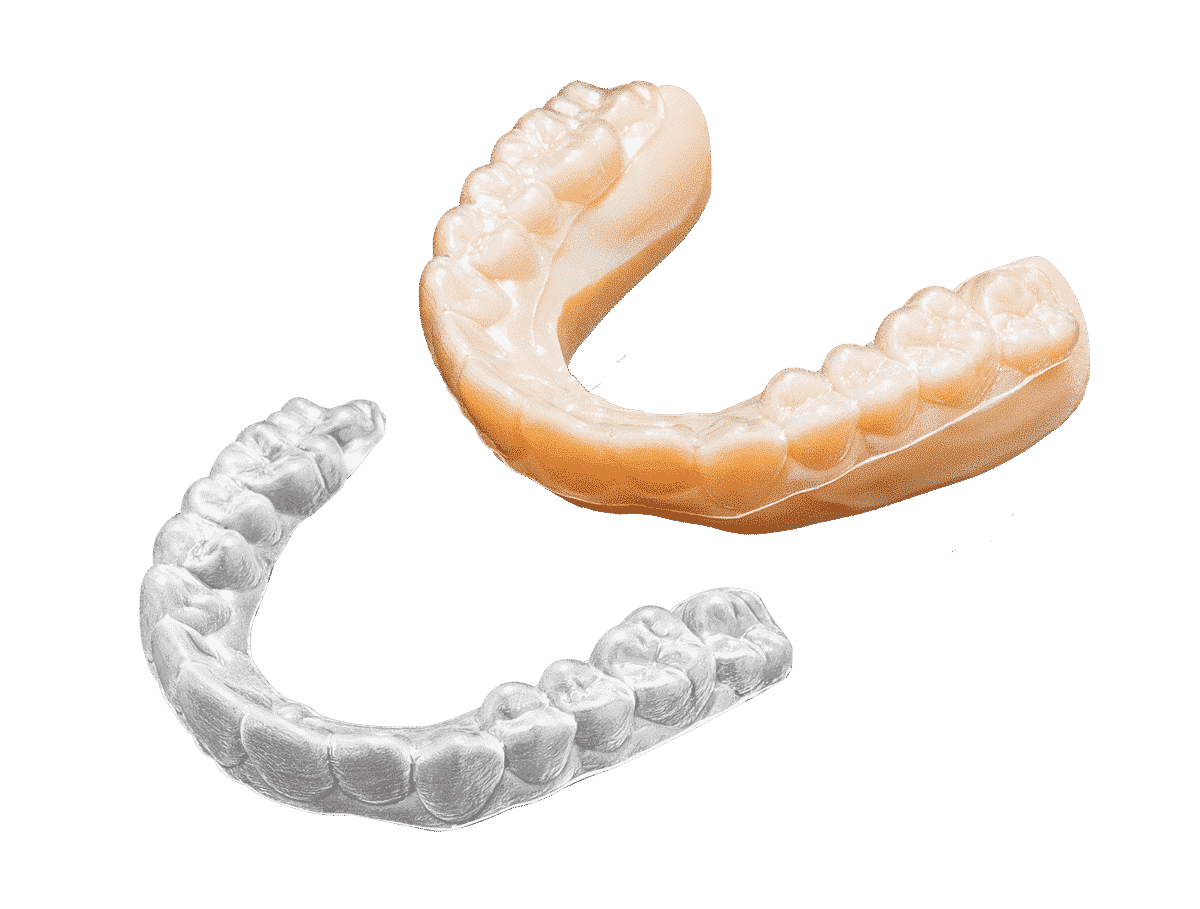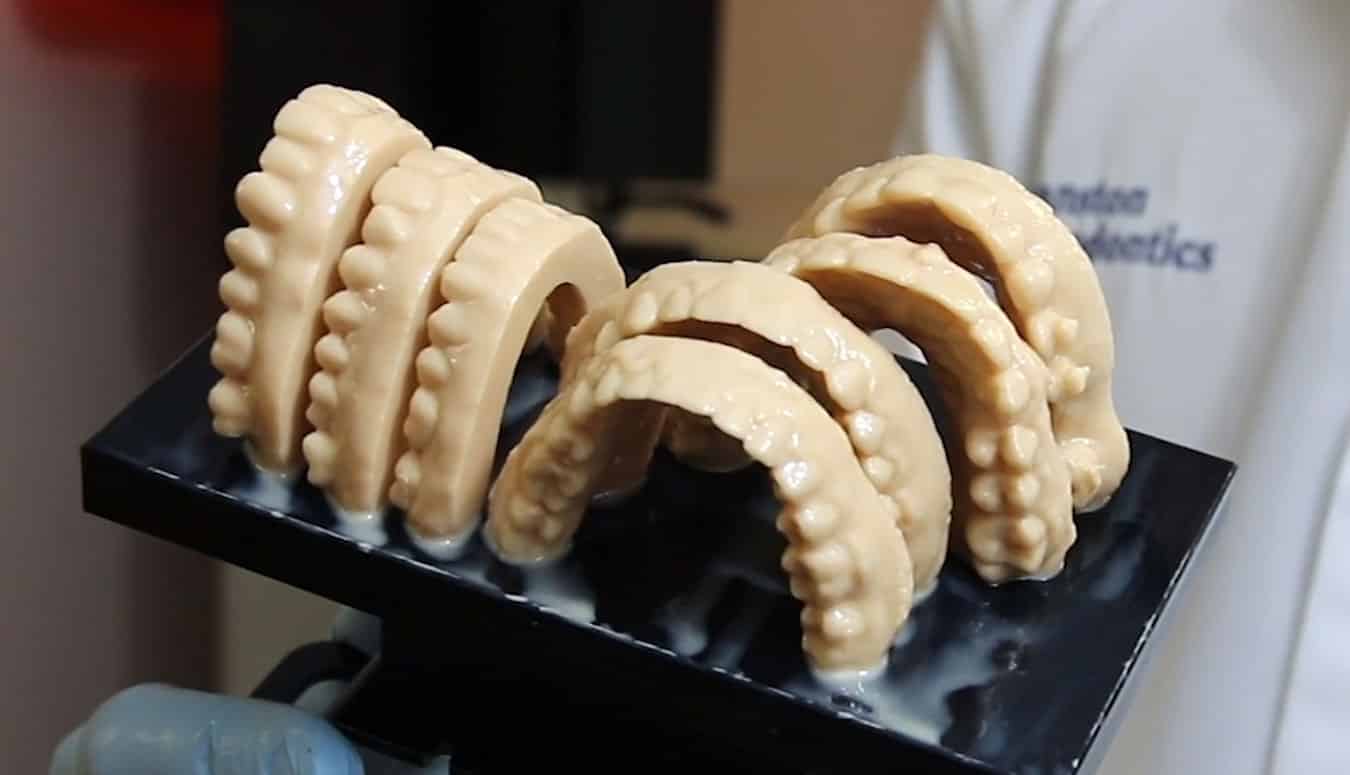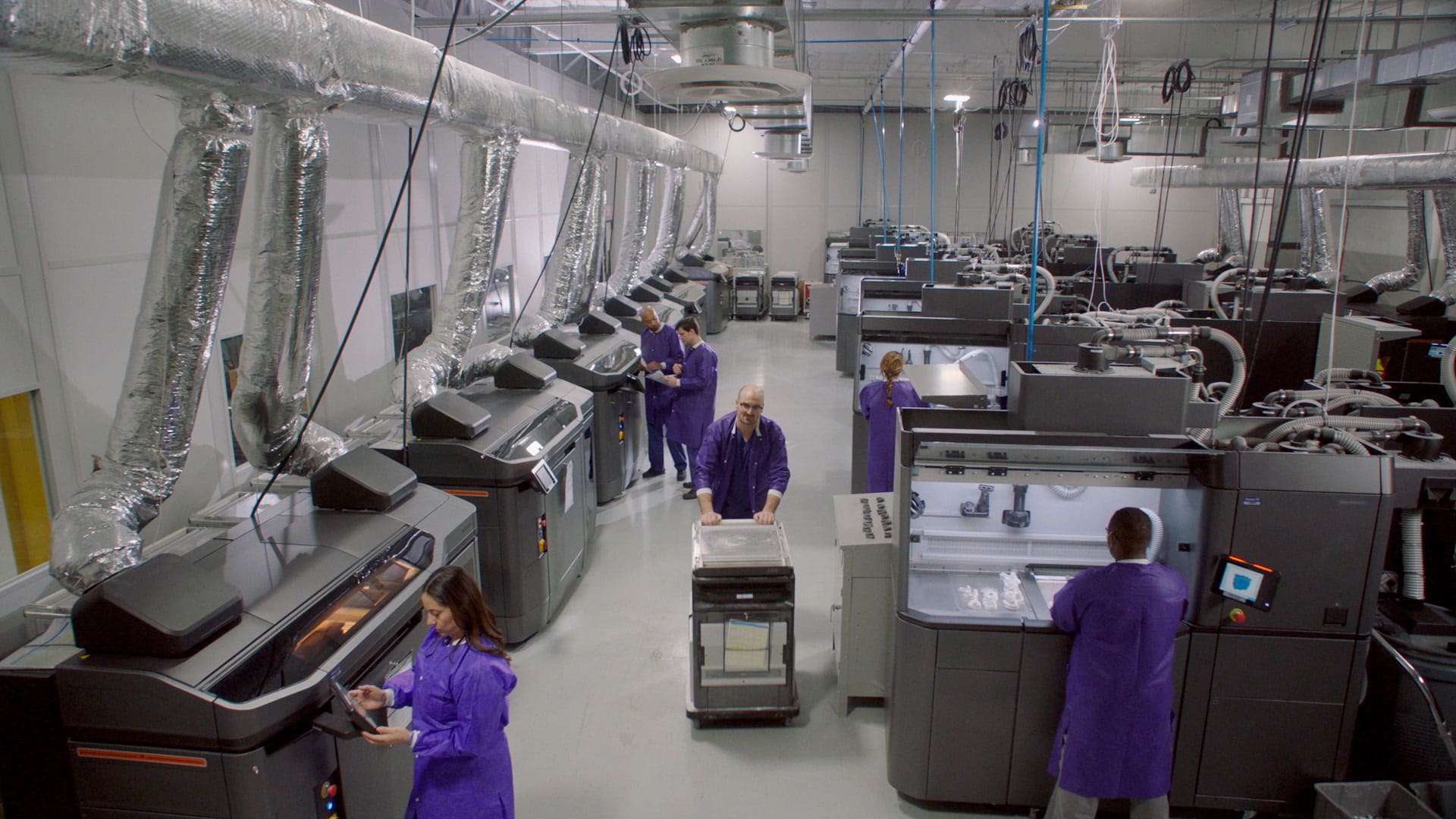It is no longer necessary to carry brackets and wire aligners for many years to get a straighter smile: people all over the world can use custom clear aligners to correct the alignment of their teeth, which are not only much discrete, and can be removed without professional intervention. The growing adoption of transparent aligners (reported to have a market value of more than 2 billion U.S. dollars in 2019) is largely due to 3D printing, a technology that enables orthodontic laboratories and professional companies to achieve mass customization.
The beginning of clear aligners
Although non-metallic aligner systems for teeth have been used to some extent since the 1940s, as we recognize today, the digitally-driven transparent aligner technology was pioneered and popularized by two students from Stanford University. In the late 1990s, these students invented the Invisalign system, the first of its kind to create a series of digital aligners based on a single impression.
Align Technology, the company behind Invisalign, has been a leader in the transparent alignment instrument market for many years. Many of the company’s US and international patents support this dynamic, preventing competitors from gaining an important foothold in the field of digital dentistry. However, when these patents began to expire, new manufacturers flooded the market with clear aligner solutions. In some cases, aligner solutions were more affordable and more efficient. At the same time, this has inspired many 3D printing companies to participate in the production of transparent aligners, usually on a large scale.

How does the transparent aligner actually work?
Today, people all over the world are using clear aligner solutions for orthodontic correction. However, before we discuss which 3D printing companies play a key role in the production of the orthodontic equipment, we must first explain the actual working principle of the aligner.
In short, orthodontic braces are substituted for conventional orthodontic braces (it should be noted that they are not suitable substitutes in many cases) and consist of a transparent plastic shell that can be placed on the patient’s teeth and moved gradually until obtaining the desired location. Unlike metal braces, the wearer can remove the braces, making daily tasks such as eating and dental hygiene easier.

The transparent orthosis is tailor-made for the patient and can be designed to be used for up to two weeks (variable), and then replaced with a new slightly improved orthosis. Typically, intraoral scanners or physical impression scans will be used to digitally capture the patient’s oral cavity. This scan data is then used to generate a 3D model of the patient’s teeth, which is used as the basis for the alignment plan. Then a series of aligners (using various techniques as we will see) are manufactured, each of which has a slightly different shape to gradually straighten the teeth.
After putting it on, the transparent aligner will apply slight pressure on the teeth that need to be straightened, which triggers the response of the jaw to move the alveolar. The alignment process is designed to make the wearer comfortable, so it is gradual, moving the teeth in the mouth very slowly. If the patient wears transparent braces for most of the day (approximately 22 hours a day), the results of smile correction can be seen within a year in most cases.
Mass customization through 3D printing
So far, we have not really solved the problem of how 3D printing can play a role in the manufacture of clear aligners, but this does not mean that it is not important. Today, most (if not all) transparent orthodontic machine companies also use 3D printing when producing patient-specific dental products. It has always been a key driver of mass customization.
Interestingly, the production of transparent aligners does not have a dominant 3D printing process, but the overall workflow is similar. In other words, whether a clear orthodontic company uses Stratasys PolyJet, HP Multi Jet Fusion, DLP or SLA technology, most companies use 3D printing to generate models of patients’ teeth, rather than the final product itself. In most cases, the 3D printed orthodontic model is thermoformed, in which a transparent plastic plate is heated to a flexible point and formed on the mold to form the final product.
3D printing is currently the only manufacturing process on the market that allows mass customization of orthodontic aligners: other more traditional manufacturing processes are too expensive. In addition, 3D printing makes it possible to produce multiple aligner molds at once.

Key players in 3D printed orthodontic aligners
In this part, we will first look at one of the pioneers of digitally manufactured transparent alignment instruments: Align Technology, the company behind Invisalign. 3D Systems’ stereolithography technology is the company’s preferred technology in the production of teeth straightening products. The two companies have been partners, using 3D Systems’ 3D printing technology to produce custom molds for aligners for 5.8 million patients. As of the end of 2018, Align Technology is running an end-to-end manufacturing process that can produce more than 320,000 custom aligners per day.
Another key player in the transparent aligner market is SmileDirectClub, a US company founded in 2014. The company is a leader in the home transparent alignment instrument industry under the guidance of doctors, which means that customers can conduct 3D imaging conferences in any of the following places. Many SmileShops of the company, or they can use household products to create intraoral impressions. SmileDirectClub produces millions of custom aligners for customers around the world and uses HP’s Multi Jet Fusion 3D printing to achieve these ratios. As of last year, Teledentistry is operating 49 MJF systems and can produce more than 50,000 unique dental molds every day-up to 12 million per year. It is worth noting that SmileDirectClub is the largest manufacturer of MJF 3D printed parts in the United States. The two companies have also established a recycling program that converts unused 3D materials and processed plastic molds into pellets for injection molding.
A number of orthodontic equipment providers, including ClearCorrect LLC and DynaFlex under Straumann, all use Stratasys’ PolyJet 3D printing technology. The former started using Stratasys’ Objet Eden500V 3D printer as early as 2015 to produce its 100% customized aligner model. For its part, DynaFlex is an orthodontist based in Missouri that has tried to expand its production of transparent aligners in recent years. Today, the company operates a 3D printing center equipped with several J700 dental 3D printers, allowing it to manufacture models on a large scale and achieve on-demand production. Ortoplus, based in Malaga, also uses Stratasys’ J700 solution to produce transparent alignment instruments “out of the box”.
At the other end of China, Hanyang Technology uses EnvisionTEC DLP 3D printing technology to produce custom orthodontic aligners. Other dental and orthodontic practices, including Cranston Orthodontics, also use EnvisionTEC technology to produce clear aligners indoors. Other companies such as Prodway and Formlabs have introduced orthodontic solutions to the market, which can be implemented by dental and orthodontic laboratories worldwide.
Prodways’ solution was launched in 2019 and it provides a modular and highly automated process to produce orthodontic appliances. In other words, in order to increase the productivity of the dental appliance market, Prodways combines its MOVINGLight ProMaker L series 3D printers with robotics and automation technology. In addition, the company worked with a clear aligner workflow software provider to integrate the solution. Prodways’ modular system covers the entire production chain from design to 3D printing, from thermoforming to packaging. According to the company, its automated production solution can produce more than 2,000 transparent aligners per day. Formlabs’ digital dental solution is based on its Form 3B 3D printer and is designed for use in dental and orthodontic laboratories.

Is the future straightforward?
Although it is currently not possible to directly produce transparent aligners using 3D printing, it is still being explored. For example, Align Technology sees huge potential in the direct production of 3D printed aligners and is investing in its development. As far as EnvisionTEC is concerned, it has already brought many dental 3D printing systems and materials to the market. In fact, in 2018 (at the time it was in the process of passing the regulatory approval process), it disclosed a direct aligner E-Ortholign 3D printed materials. )

